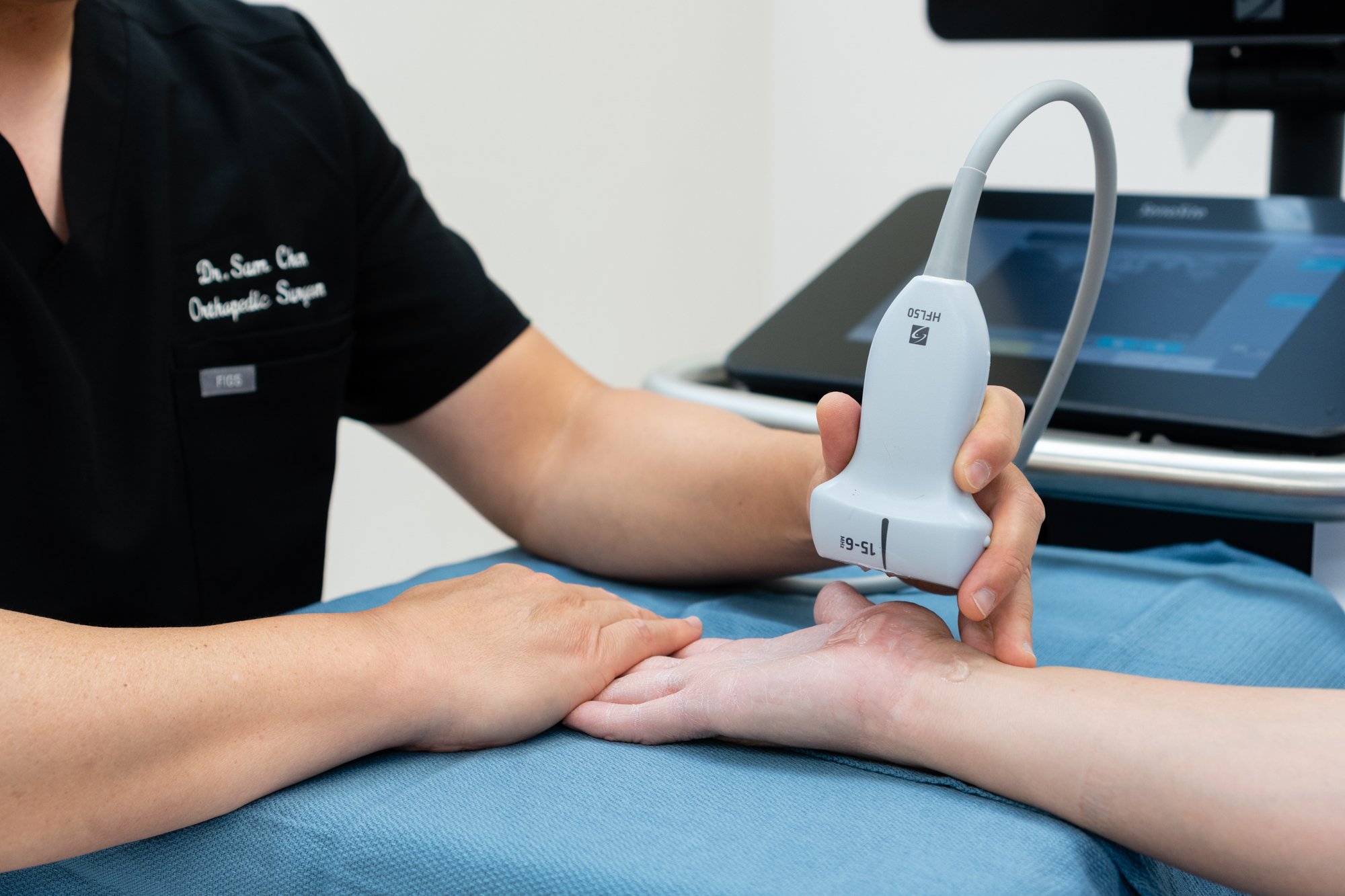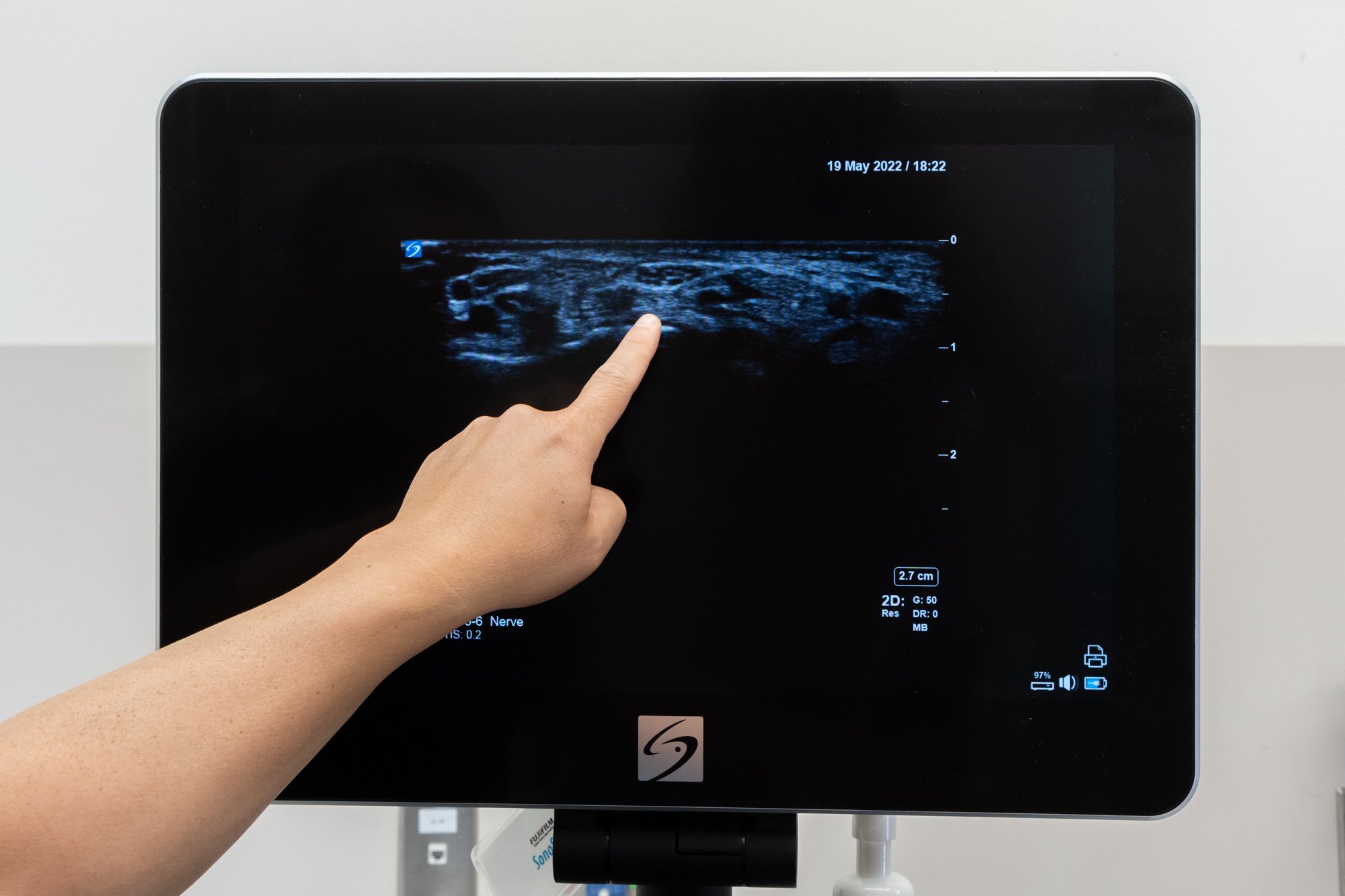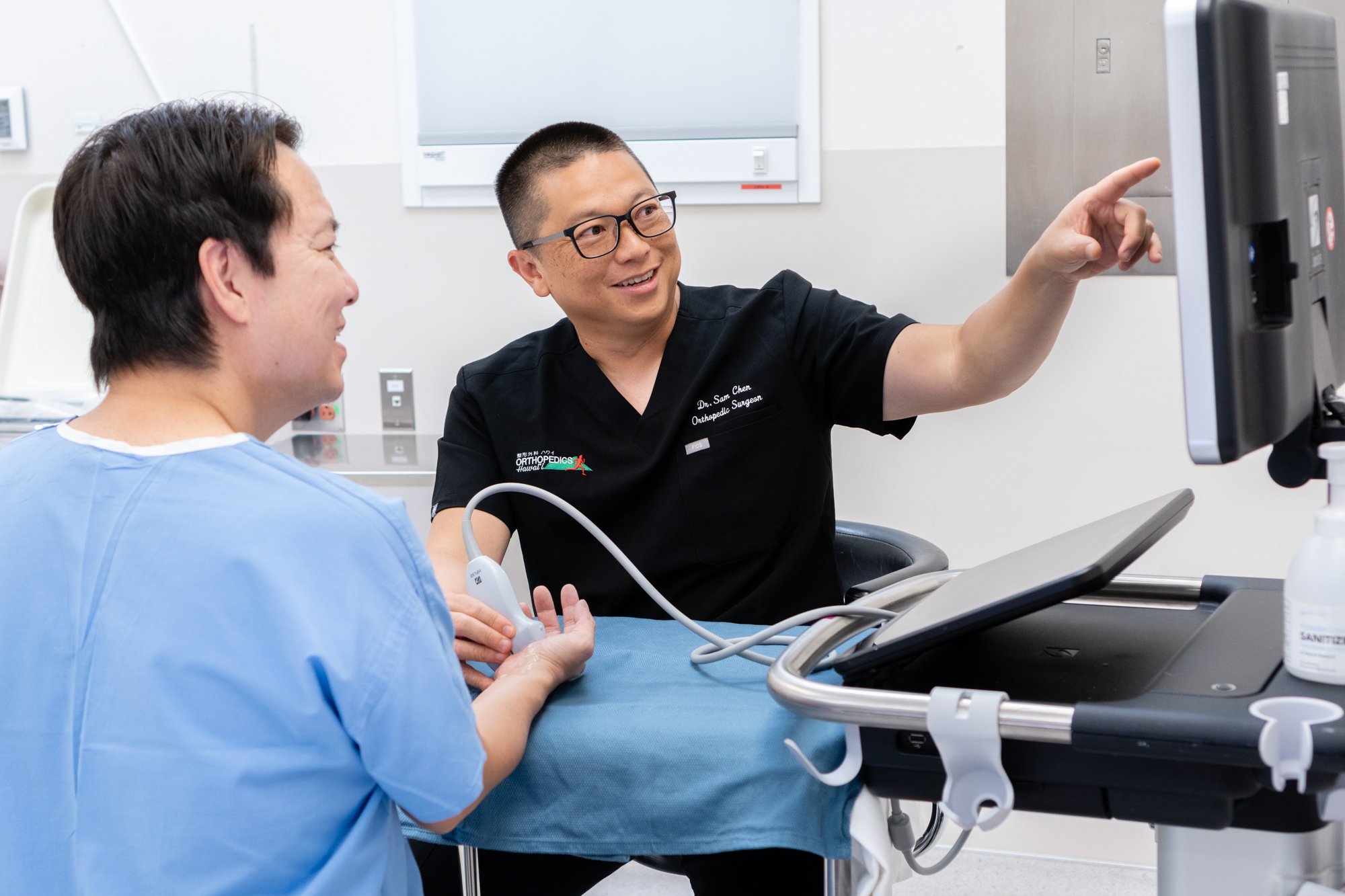How is Carpal Tunnel Syndrome Diagnosed and Treated?
What is Carpal Tunnel Syndrome?
Carpal Tunnel Syndrome is a condition that causes pain, weakness, tingling and numbness in your wrist, hand and fingers. Carpal Tunnel Syndrome is caused when there is increased pressure on the median nerve, which runs within the wrist. Please read our article “What is Carpal Tunnel Syndrome?” to learn more about the condition, risk factors and prevention tips. In this article, we will be discussing how it is diagnosed and what treatment options are available.
How is Carpal Tunnel Syndrome Diagnosed?
All of our patients are seen by a Hand Specialist and Orthopedic Surgeon Dr. Sam Chen. During your consultation, Dr. Chen may conduct one or more of the following tests to determine if you have carpal tunnel syndrome.
History of Symptoms
During your visit, we will discuss your symptoms, when they began, any related injuries, review your medical history and discuss your general health.
Physical Examination
Dr. Chen will conduct a physical examination. He will test the feeling in the fingers and the strength of the muscles in the hand. He may do so by bending your wrist, and tapping on the nerve which can trigger symptoms (numbness and tingling) in many people who have carpal tunnel syndrome.
X-ray
Depending on your medical history, symptoms and the other tests performed, Dr. Chen may order an X-ray of the affected wrist to rule out other causes of wrist pain, such as arthritis or a fracture. Please note, X-rays are not used to diagnose carpal tunnel syndrome they are used to exclude other causes of hand and wrist pain.
If an X-ray is needed we have a digital X-ray machine in-house. So we can capture your imaging quickly and conveniently. There is no need to schedule another appointment at an outside imaging center.
Ultrasound
An ultrasound is a non-invasive tool we use at Orthopedics Hawaii. It involves gel placed on your wrist then a scope is gently rubbed along your wrist and hand which allows Dr. Chen to view your tendons and nerves.
Electromyography and Nerve Conduction Studies
These tests determine how the median nerve itself is functioning and evaluate how well it controls muscle movement.
Treatment Options
At Orthopedics Hawaii, we believe surgery should always be the last resort. Non-surgical treatments can be effective for less severe cases and allow you to continue with your daily activity normally. If you have a severe case we may discuss a surgical treatment plan with you.
Non-surgical Treatments
Non-surgical options are usually tried first. They may include:
Wrist Splint
Wearing a wrist splint at night can help alleviate some of the nighttime symptoms such as tingling and numbness. Although you only wear the splint at night, it can also help lower the symptoms you experience during the day. Wearing a wrist splint is also recommended for pregnant women who are experiencing carpal tunnel syndrome because it doesn’t involve taking any medication.
Nonsteroidal anti-inflammatory drugs (NSAIDs)
Taking NSAIDs such as ibuprofen may help lower pain and inflammation.
Corticosteroids
The carpal tunnel may be injected with a corticosteroid such as cortisone to alleviate the pain. Corticosteroids decrease inflammation and swelling.
Workplace Adjustments
Modifying your workspace and activities is another area to focus on. Simple modifications of your environment can decrease your symptoms. These changes may include:
Adjusting the height of your chair
Moving your computer keyboard so it is in line with your elbow or slightly below
Changing your hand/wrist position while doing activities
Using recommended splints, exercises and heat treatments from a hand therapist.
If your carpal tunnel syndrome is caused by rheumatoid arthritis or another inflammatory arthritis, then treating your arthritis may reduce symptoms.
Surgical Treatments
If non-surgical treatments do not improve your situation surgery may be the next step. The goal of carpal tunnel surgery is to relieve pressure by cutting the ligament pressing on the median nerve.
Surgery is performed with two different techniques:
Traditional Open Surgery
The surgeon makes an incision in the palm over the carpal tunnel and cuts through the ligament to free the nerve.
Endoscopic Surgery
The surgeon uses a telescope-like device with a tiny camera attached to it to see inside the carpal tunnel. The ligament is then cut through one or two small incisions in the hand or wrist. Endoscopic surgery results in a smaller incision which may lead to a faster recovery time.
Orthopedics Hawaii is the only facility in Hawaii offering Ultrasound Guided Carpal Tunnel Release and Trigger Release. This endoscopic procedure provides the same benefit as traditional open surgery but has added patient benefits such as:
Faster recovery time - The ultrasound procedure is considerably less invasive. Only a small incision is made without the need for stitches. Many patients return to work in several days.
Convenience - Patients are able to drive themselves home since sedation and general anesthesia is not necessary.
In-office Procedure - Both procedures can be performed in the clinic.
Please learn more about Ultrasound Guided Release here.
How Can Orthopedics Hawaii Help?
If you are experiencing hand, wrist or finger pain come in to see us. All of our patients are seen by Hand Specialist and Orthopedic Surgeon Dr. Sam Chen. We recommend scheduling an appointment by calling (808) 744-3360 or emailing aloha@orthopedicshi.com.





